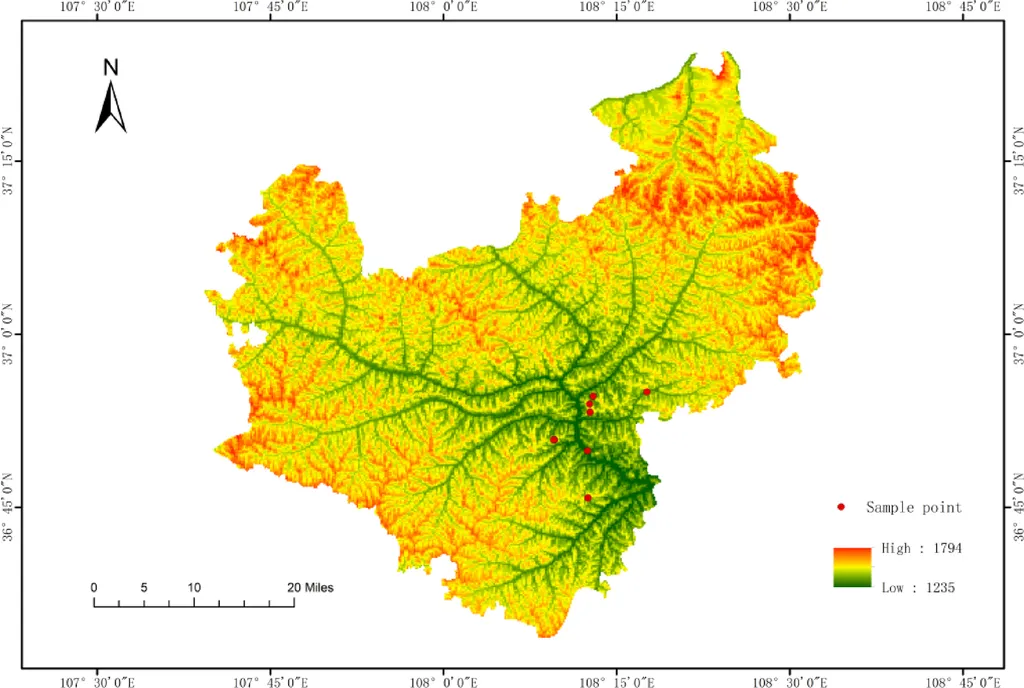In the rapidly evolving world of smart agriculture, precision is key. A groundbreaking study published in *Artificial Intelligence in Agriculture* introduces a novel method for generating high-resolution, real-time soil property maps, promising to revolutionize variable-rate seeding and enhance agricultural efficiency. Led by Xiaoshuang Zhang from the College of Engineering at China Agricultural University and The Soil-Machine-Plant Key Laboratory of the Ministry of Agriculture of China, this research addresses a critical gap in current agricultural technology: the lack of localized, high-precision soil mapping capabilities.
The study presents the Local Soil property distribution maps Generation Network (LSGN), a model built on the Wasserstein Generative Adversarial Network with Gradient Penalty and Mean squared error (WGAN-GPM). This innovative approach integrates a Vision Transformer (ViT) encoder with convolutional and deconvolutional Residual Networks (ResNet), significantly improving the extraction of features from discrete soil property data. The result is a marked enhancement in the reconstruction accuracy of localized soil maps, crucial for precision agriculture.
The LSGN model employs a two-stage training strategy. First, it undergoes self-supervised pre-training using local soil property maps with neighborhood information, allowing the network to learn spatial correlations and improve boundary prediction. Second, the pre-trained weights are transferred into a WGAN-GPM adversarial training framework. This framework combines Wasserstein distance, gradient penalty, and Mean Squared Error (MSE) loss to jointly optimize the generator and discriminator, ensuring both pixel-level accuracy and distributional consistency.
The implications for the agriculture sector are substantial. “This technology enables real-time, high-precision soil mapping, which is essential for precision seeding,” explains Zhang. “By reducing errors in boundary and central regions, we can optimize seed placement, leading to better crop yields and resource utilization.”
Compared to standard Generative Adversarial Networks (GANs), the WGAN-GPM-trained LSGN prediction shows impressive improvements. It reduces Relative Error Average (REA) by over 1.02%, Root Mean Square Error (RMSE) by over 0.16, and Kullback–Leibler Divergence (KLD) by over 1.76 × 10−4, while increasing Peak Signal-to-Noise Ratio (PSNR) by over 2.43. These advancements translate into more accurate and reliable soil maps, which are vital for modern farming practices.
Field cross-validation further underscores the superiority of LSGN. Relative to Kriging interpolation, LSGN reduces boundary region prediction errors by up to 2.42% and central region errors by 0.97%. Overall, the REA in local distribution maps decreases by more than 1.5%, and RMSE is reduced by over 0.4. These metrics highlight the practical benefits of LSGN for farmers and agritech companies alike.
The commercial impact of this research is profound. Precision agriculture is a growing market, with increasing demand for technologies that enhance efficiency and sustainability. The ability to generate high-resolution, real-time soil maps can lead to more informed decision-making, better resource management, and ultimately, higher crop yields. This technology can be integrated into existing agricultural systems, providing a competitive edge for companies that adopt it.
Looking ahead, the success of LSGN opens new avenues for research and development in smart agriculture. As Zhang notes, “This is just the beginning. The potential for further improvements and applications in precision agriculture is vast.” Future developments may include the integration of LSGN with other advanced technologies, such as drones and satellite imagery, to create even more comprehensive and accurate soil maps.
In conclusion, the research led by Xiaoshuang Zhang and published in *Artificial Intelligence in Agriculture* represents a significant leap forward in the field of smart agriculture. By providing a practical solution for real-time, high-precision soil mapping, LSGN has the potential to transform precision seeding and enhance agricultural productivity. As the agriculture sector continues to embrace technological advancements, innovations like LSGN will play a crucial role in shaping the future of farming.

